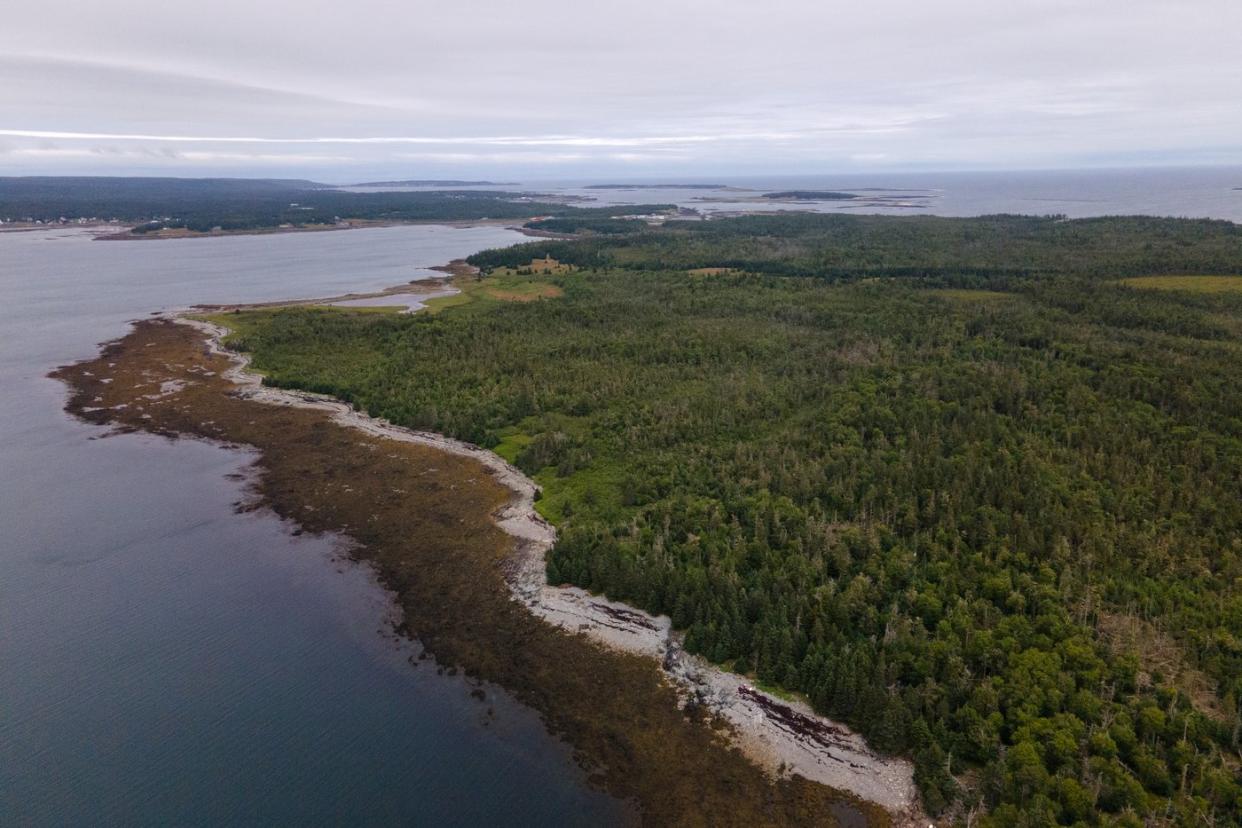'Ecologically significant' island the size of Central Park preserved

Late Saturday morning, dozens, if not hundreds, of people are expected to gather on Grand Manan to look upon an ecologically rich island that formed an important part of New Brunswick’s history.
Supporters will be there to celebrate the preservation of Ross Island, accessible by foot from the main island on the Bay of Fundy at low tide.
The Nature Trust of New Brunswick plans a grand opening of the Keiko & Errol Nature Preserve at Ross Island following the biggest fundraising campaign in its history.
The $1.3 million the charitable land conservation organization raised has created one of its largest nature preserves in the province, a 373-hectare (922-acre) sanctuary that will protect salt marshes, coastal forest and hundreds of thousands of migratory birds.
“You can take a three-to-five-hour hike, most of it along the coast, where you see ocean views and really cool rock formations,” said Sabarah Pilon, the trust’s engagement manager, in an interview.
“There are some significant wetlands, coastal forest, rocky shorelines, spruce and fir forests, open peatlands, cobble beaches, ferns, salt marshes. And it’s recognized as an important bird area, with red-breasted merganser, red knots, cormorants and sandpipers. It’s ecologically significant because of the level of the diversity and the size of the preserve.”
Surrounded by rich fishing grounds and volcanic rock, Ross Island was also the first place that Europeans settled on the Grand Manan archipelago in the southernmost part of the province. It is due east of the State of Maine in the cold waters of the Bay of Fundy.
Long used by the Peskotomuhkati Indigenous people, the island became home to 50 United Empire Loyalists who made the trek from the United States in 1784, after their side lost the War of Independence.
The island itself is named after Captain Thomas Ross, a Loyalist settler from Maine, who drowned in 1804. By 1866 Ross Island had a small fishing community with eight families, but as the decades passed it only had a succession of lighthouse keepers and their broods.
Over the years, the Grand Harbour Lighthouse, as it was called, was photographed and celebrated as a fading icon. Sadly, for preservationists, the lighthouse collapsed during a gale in November 2013.
The trust acquired the property in 2021 from a private owner, Errol Raines of New York (the preserve is named after him and his wife). It was made possible with $900,000 in funding from Ottawa, $300,000 from MapleCross, a philanthropic foundation in Ontario that helps establish nature preserves, and $100,000 from the local community, including Grand Mananers.
The provincial government did not contribute any funds.
The ribbon cutting has been three years in the making. Pilon explained that because of staff turnover and the size of the preserve, it took longer than expected to make sure the 8.9-kilometres of trails and signage on the island were properly done. The island is slightly larger than Central Park in New York City.
“It was very important to make sure everything was safe.”
The festivities near Grand Harbour on the southeastern coast of Grand Manan kick off at 11:30 and continue until 1 p.m. at the end of the Shore Road.
Ross Island is just one of the trust’s 80 nature preserves in the province, comprising 12,000 acres or about 4,900 hectares.
What is still up in the air is the walk planned for the island itself. Low tide is close to 6:30 a.m. and 6:30 p.m. on Saturday, so a crossing in the early afternoon would only be possible by boat or a very frigid swim.
John Chilibeck, Local Journalism Initiative Reporter, The Daily Gleaner


